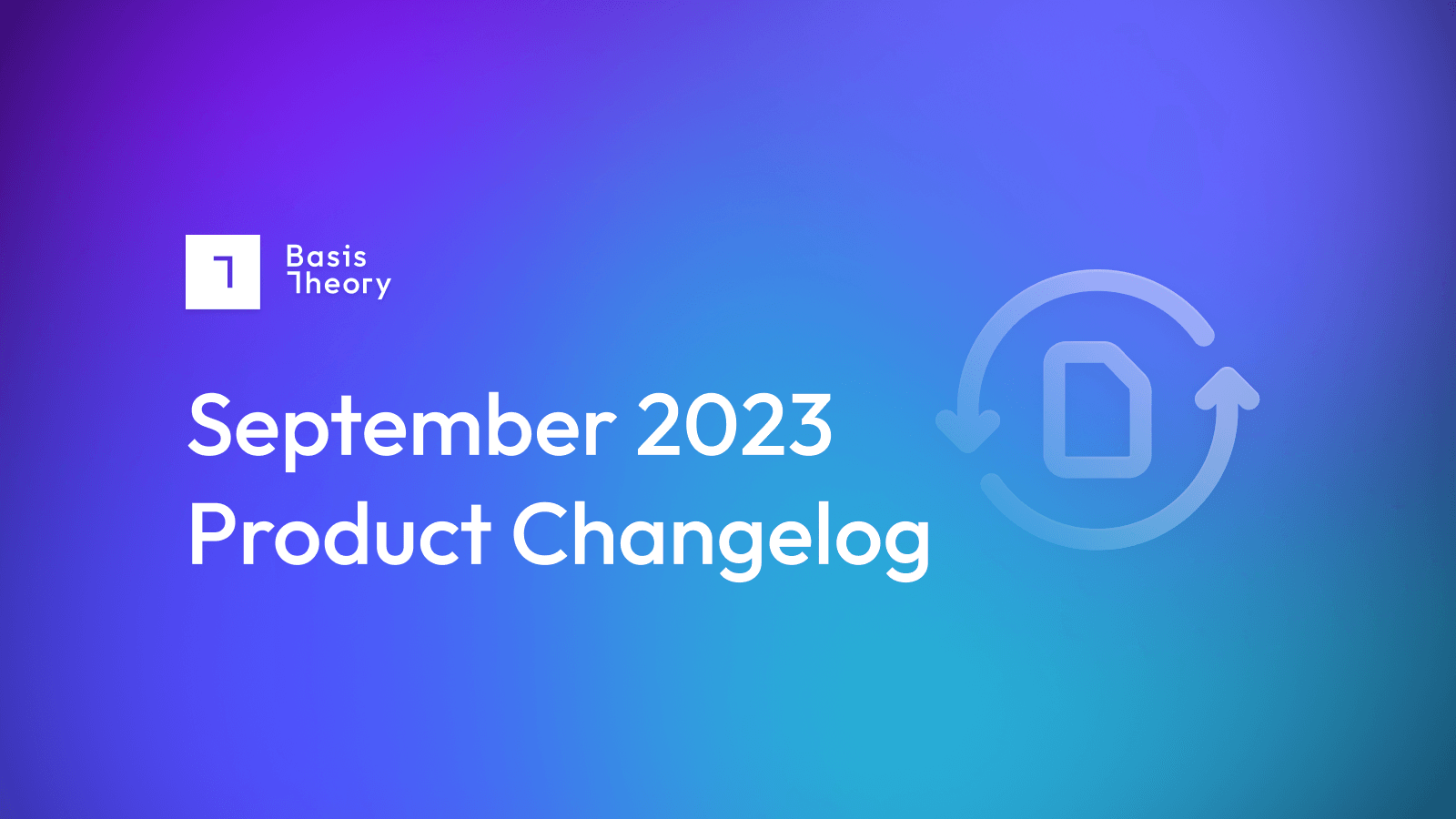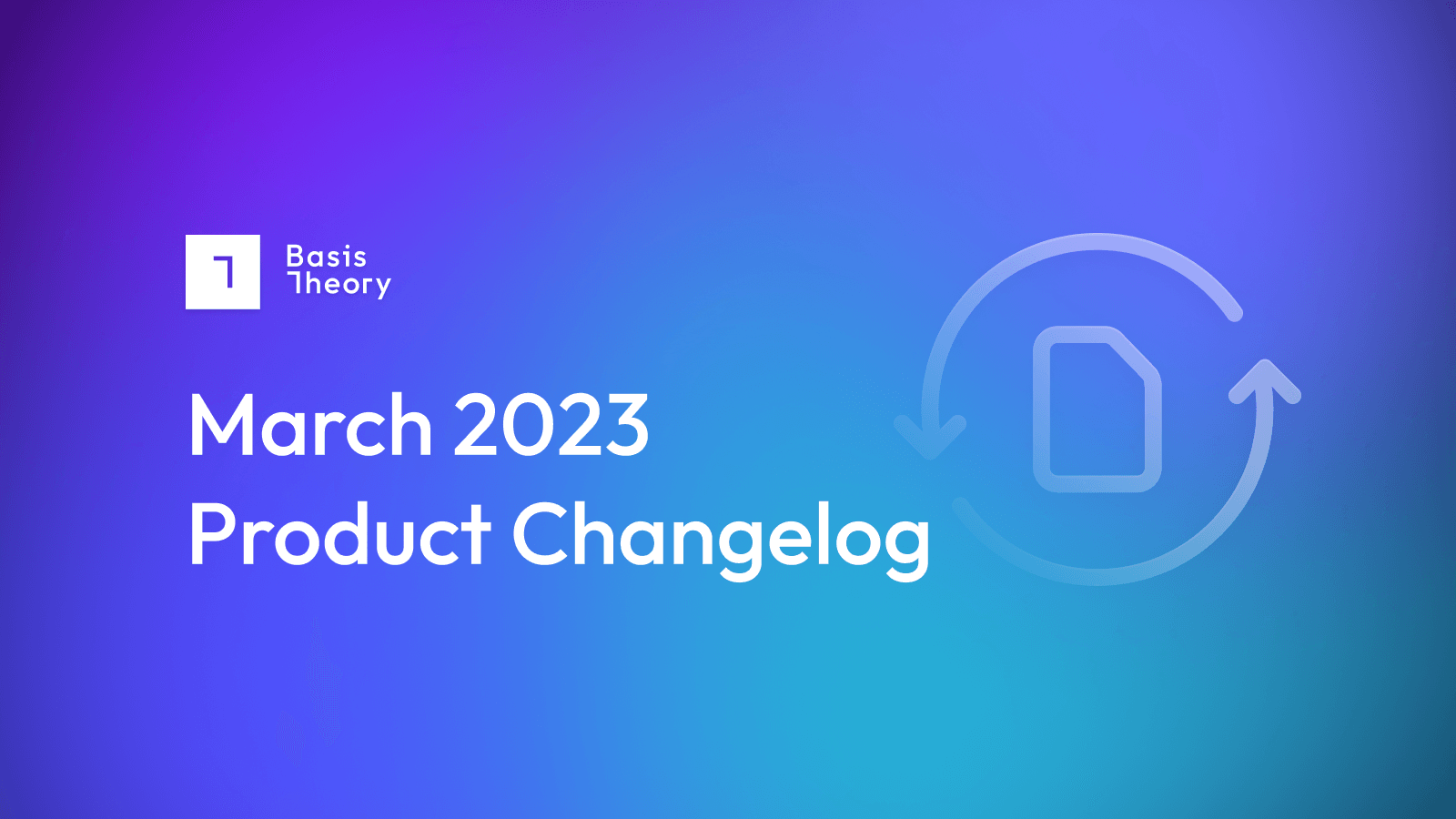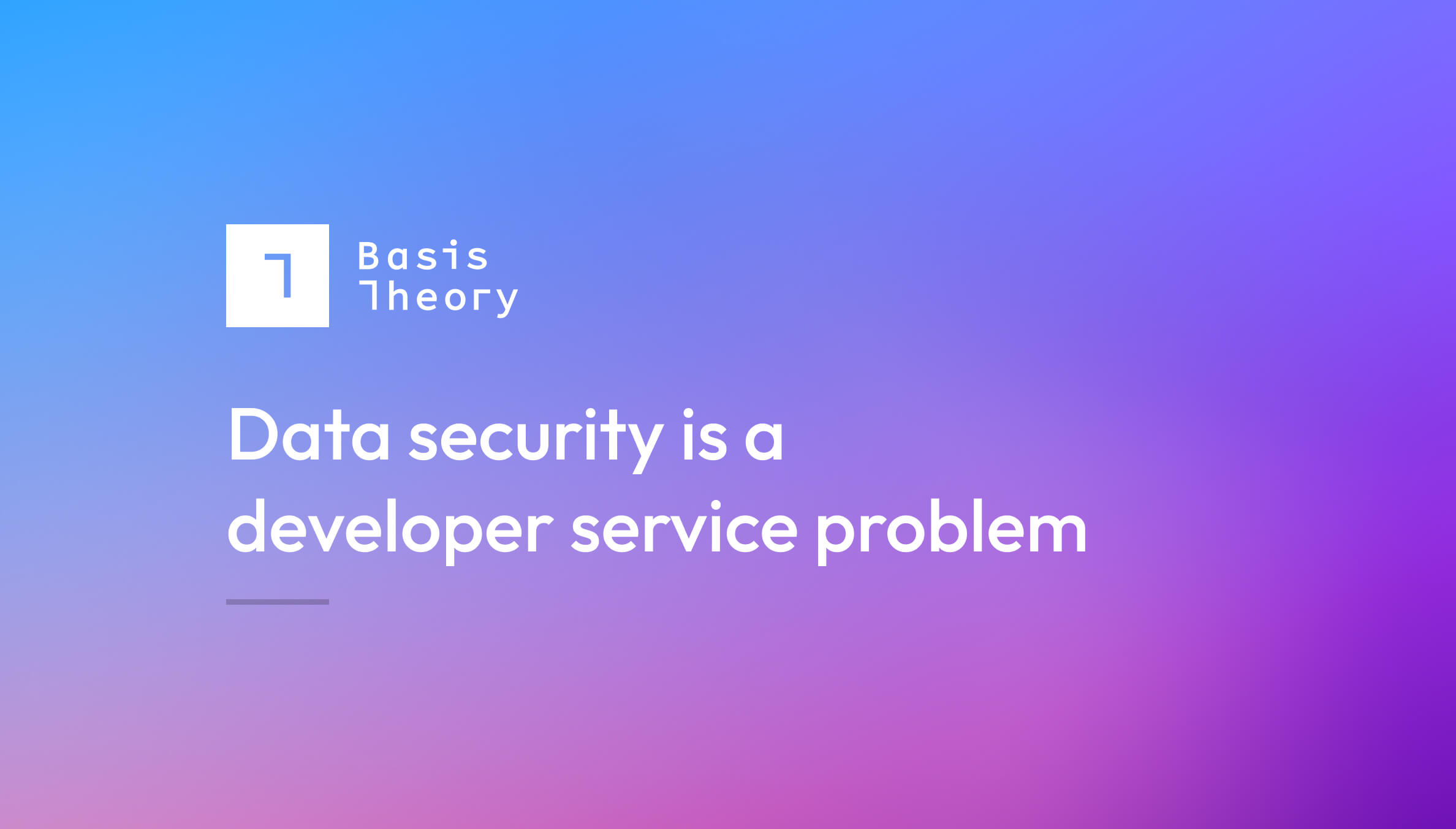September 2023 Changelog

Happy October!
This month, we're excited to share a variety of updates and enhancements to our platform, all designed to help you issue and manage card data with greater ease and confidence. We're also showcasing some of the creative ways our customers are using Basis Theory to unlock new value within their organizations.
Here are just a few of the highlights:
- More transparency into your API calls: We've made it easier to understand your Basis Theory integrations with 3rd parties.
- Powerful new features for Proxies and Reactors: Our customers are using our Proxies and Reactors to implement all sorts of innovative solutions, from encrypting data in transit to compliant connections straight to the card schemes.
- Boost revenue and user adoption for your credit card issuance program: We are making it easier for developers to increase the usage of their newly issued credit cards.
Let's take a closer look at the results of our developers' hard work over the last month.
Issuing - Copy Card in Mobile SDKs
If your company issues your own debit or credit cards, you may run into some well-known problems with your issuing partners that limit your creativity or ability to drive volume to your card. Basis Theory can help solve this problem by giving you more flexibility when revealing credit card data within your web or mobile app.
Recently, we just added the ability to copy the card details of your mobile app, which allows your customers to easily copy this information and plug it into the app where they want to make purchases. Not only do our revealing elements allow you to work outside of the limitations of widgets and iframes from your issuing partners, we can now make it even easier for your customers to make purchases, which helps drive volume for you and removes friction for your customers.
To learn more about how to use Basis Theory for your Issuing use-case, check out our Issue Cards and Display Cards guides for the details on how to enable copy in mobile - see here for iOS and Android SDK documentation.
Issuing - Driving Volume through KnotAPI
What else can you do to drive volume? The average US consumer has approximately 12 - 17 recurring bills each month. To easily tap into this revenue, you can leverage a service like KnotAPI to easily update all of these subscriptions with a simple integration. Basis Theory can send these raw PANs to KnotAPI without the need to become PCI Level 1 compliant.
Card on File Switcher from Knot API saves your customers time by automatically switching their subscription services from their previous cards over to yours. This makes it easy for your customers and helps drive revenue through interchange over to you way more efficiently.
Find our guide on implementing the Card on File Switcher from Knot API on our Basis Theory Labs Github repo. If you have any questions about using Basis Theory for issuing cards, sharing card data, or designing the card reveal UI of your dreams - please reach out to our sales team and we’d be happy to share best practices and get you up and running.
PAR Access
We're excited to announce our new PAR connections! PAR, or Payment Account Reference, is a unique identifier allowing merchants and fintechs to identify unique card numbers across multiple payment methods, including CNP, Apple Pay, Google Pay, network tokens, and Click to Pay.
PAR has a variety of valuable use cases, including:
- Fraud detection: PAR can help merchants and fintechs detect fraud and abuse, such as multi-account and promotion abuse.
- Loyalty programs: PAR can help merchants and fintechs create and improve loyalty programs by allowing them to identify unique customers across multiple payment methods.
One of the most significant barriers to entry with PAR is sending the actual PAN, so if you are not PCI level 1 certified or utilize a tokenization platform like Basis Theory, then this info is out of reach for you currently.
To get started with PAR, we have a guide you can easily customize with your credentials. To request access to these templates or learn more about how PAR can help solve your use case, please get in touch with us.
To learn more about PAR, be on the lookout next week for our upcoming blog post where we detail its use cases and benefits.
Other updates and bug fixes
- [Documentation] - New Apple Pay guide to support the decryption and routing of DPANs
- [API] - Bug fix when tokenizing with BIN enrichment and deduplication enabled.
- [API] - Destination status header
BT-PROXY-DESTINATION-STATUSenables you to differentiate between an integration error with Basis Theory or the 3rd party. - [API] - Added
BT-PROXY-DESTINATION-STATUS: 408,499to improve the transparency for 3rd party timeouts vs internal server errors. - [API] -
enterpriseReserved Proxy Request Headers - Adds theBT-PROXY-CONNECTIONandBT-PROXY-KEEP-ALIVEheaders for TCP connection management. - [API] -
enterpriseEU instance - now processing and holding user data in data centers located within the EU. Reach out to us for EU-specific tenants.
.png?width=365&height=122&name=BTLogo%20(1).png)





